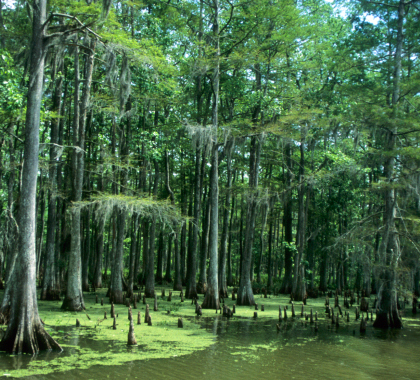Continuing its rollback of Obama-era regulations President Donald Trump has claimed are unnecessarily hampering the U.S. economy without appreciably improving the environment, the Trump administration pulled the plug on the Environmental Protection Agency’s (EPA) 2015 Waters of the United States (WOTUS) rule.
Farm groups, homebuilders, realtor groups, and property rights advocates, among others, sued to block the rule, stating WOTUS was among the most far-reaching rules ever issued in EPA’s 48-year history in giving the federal government power to limit the uses of millions of additional acres of private and state property.
Obama’s EPA said WOTUS clarified the federal government’s jurisdiction over bodies of water under the 1972 Clean Water Act (CWA), which, among other things, granted EPA and the U.S. Army Corps of Engineers jurisdiction over “navigable waters of the United States.”
Courts Limit Jurisdiction
Twice in the past two decades, the U.S. Supreme Court struck down regulations EPA developed asserting jurisdiction over wetlands and bodies of water which, while not navigable themselves, were adjacent to or had some connection to navigable waters, for being overly broad.
The Supreme Court did not provide clear guidance concerning what waters and lands fell under the EPA’s and Army Corps of Engineers’ jurisdiction. Most recently, in the Court’s 2006 Rapanos v. United States decision, Justice Anthony Kennedy wrote federal jurisdiction extended to waters and lands having a “significant nexus” to navigable waters.
Decision Expanded Federal Power
What constituted a “significant nexus” remained unclear, leaving businesses, landowners, and municipalities in the dark over their regulatory status under the CWA.
In 2015, the Obama administration proposed clarifying the issue by greatly expanding EPA’s jurisdiction to all waters of the United States, not just navigable waters, including ditches, ponds, groundwater, and even “ephemeral” waters arising temporarily after rainfall.
The rule could have required farmers, ranchers, and other landowners with small or seasonal bodies of water on their lands to obtain permits from EPA if they wanted to modify their properties.
A host of organization sued to halt the rule, and on October 9, 2015 the U.S. Court of Appeals for the Sixth Circuit in Cincinnati issued a nationwide stay on WOTUS, ruling EPA’s guidelines were “at odds” with key Supreme Court rulings.
“We conclude that petitioners have demonstrated a substantial possibility of success on the merits of their claims,” said the judgment. The rule has been on hold since then.
Having vowed to kill the rule during the 2016 presidential campaign, President Trump issued an executive order in February 2017 directing EPA to carry out the “elimination of this very destructive and horrible rule.”
‘The Certainty They Need’
The Trump administration announced on December 11, 2018 an alternative wetlands regulation it says will make clear what waters over which federal and state governments have respective authority.
“Our proposal would replace the Obama EPA’s 2015 definition with one that respects the limits of the Clean Water Act and provides states and landowners the certainty they need to manage their natural resources and grow local economies,” said Acting EPA Administrator Andrew Wheeler in a statement. “For the first time, we are defining the difference between federally protected waterways and state protected waterways.”
The Trump administration’s proposal would divide navigable waters into six categories: traditional navigable waters (rivers, bays, the Great Lakes, etc.); waterways connected to navigable waters, including tributaries; certain navigable ditches used for commercial shipping, such as the Erie Canal; lakes and ponds that contribute to navigable waterways; impoundments of jurisdictional waterways; and wetlands adjacent to navigable waterways through “direct subsurface connection.”
Excludes Temporary Waters
EPA’s proposal explicitly excludes certain waters and lands from federal regulation, such as “features that only include water during or in response to rainfall; groundwater; many ditches, including most roadside or farm ditches; prior converted cropland; storm water control features; and waste treatment systems.”
Many of the bodies of water not covered under the new proposal are still subject to state protections.
“We don’t need to have the dual protection and the dual requirements and permits at both state and federal levels,” Wheeler said in a December 12 interview on the Hugh Hewitt radio show.
‘Burden Has Been Lifted’
Trump’s action will save farmers money they would have had to spend on legal fees and regulatory filings, says Martha Boneta, a property-rights activist and president of the Virginia-based Piedmont Agriculture Academy.
“Under the Obama WOTUS rule, farmers across the country were facing the prospect of spending huge amounts of money on lawyers and consultants just to defend themselves against unbridled and unaccountable bureaucrats,” Boneta said. “Now this burden has been lifted from their shoulders, and they can go about the business of providing food for the world.”
‘The Fight Is Far from Over’
EPA’s proposed WOTUS revision may be only a temporary victory, says Craig Rucker, president of the Committee for a Constructive Tomorrow (CFACT).
“The Obama administration wanted to use WOTUS to impose federal zoning on millions of acres of private land,” said Rucker. “Trump’s move is a real setback for the administrative regulatory state.
“The fight is far from over, with environmental groups expected to bring suit against EPA and the Army Corps in hopes of overturning the Trump initiative,” Rucker said.
Bonner R. Cohen, Ph.D. ([email protected]) is a senior fellow at the National Center for Public Policy Research and a senior policy analyst with CFACT.





